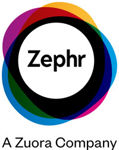A newspaper publisher recently said to me: “That thing across the top of the front page. We could sell that. It’s a prime spot, we could charge a premium.” The 'thing’ to which he referred was the coloured strip that runs under or over the masthead and is variously called the blurb, puff panel, skybox promo-panel, boost or teaser. Remarkably, in the UK, just about every newspaper uses one. My instinctive response was – hands off. “It will undermine the paper's credibility,” I said. He wasn’t convinced. “Why would a strip advert across the top undermine the paper any more than the strip across the bottom? We run a banner on the website. What’s the difference?” He pointed to the wraparounds regularly sold to advertisers, specifically mentioning the Sun’s Tesco wrap during the Charlie Hebdo shootings. “If the country’s biggest selling paper can sell its front page, surely we can sell the strip without undermining anything.” The agitated editor was looking at me plaintively, so I took a different tack: “It’s one of editorial’s main marketing tools. It’s there to sell the paper,” I said. “Well, it’s not doing a very good job, is it?” replied the publisher. Ouch. He had, I conceded, a point.
Too many newspapers still forget the sole purpose of the blurb is to sell the paper; to tease the elusive casual or non-reader to pick it up. The idea is that someone walks into a shop for 20 cigarettes and a packet of mints and, because of the blurb, walks out with a paper. To do that, it has to be legible, attractive and hit the reader between the eyes.
Blurbs have been used in newspapers for decades but it wasn’t until colour came along in the 80s that they became prevalent. Initially they were often poor. They were over-designed or little more than headlines. I have copies of early blurbs that give no thought to selling the paper. They include:
Council discusses pollution policy: This has a negative effect. People will say, “if that’s the best they’ve got, I’ll give it a miss”.
Next week - win a rocking baby chair: Limited appeal and it’s not even in the paper. There is no evidence of people buying a paper for something that’s not in it.
Oh, to be in Husthwaite: Too cryptic (and dull).
Propagation for all: A free packet of seeds.
Door slightly damaged in post office raid: The word ‘slightly' is absurd.
Adam Trimingham speaks his mind on the staying power of books on page 19: What, I wonder, is on pages 2 to 18, if this is the best they have?
Back Page - Wolves heading South in search of win. P56: Back Page is the headline. Are we selling the location or the content? Magazines don’t put page numbers on their coverlines at all. Back Page and P56 is overkill.
I have some good ones too:
The shocking sight that made me leave my husband
We name city’s worst dressed men
And, hats off to the News & Star in Carlisle:
I found long lost cousin down the back of the sofa
All would earn a second glance, if not a sale.
These days, the blurbs have generally become more sophisticated. The Mail and Sun, the papers that sell more than any others, are excellent at making the blurb catch the eye on the newsstands. But I still see some poor efforts in the regions, where too often, the raison d’être has been forgotten. So, for those hard-pressed souls churning out pages, here are some tips on the dos and don’ts of blurbery:
* Tease the readers, arouse their interest.
* When you have limited space, why use dead words such as ‘plus’ and ‘inside’ (where else would it be … in the butcher’s shop next door?). ‘Free inside’ makes me wince … how many times do we get to something in a paper and have to pay?
* Tell readers what's on offer, not just that you have lots of pages. Is '32 pages of property' more likely to sell than 28 pages or less likely than 36? In these days of information overload, people want quality, not masses of paper. I live in fear of a blurb that says ‘48 pages of ink and newsprint’.
* People like bargains. If the value of the paper is greater than the cover price, tell people. Money off, free vouchers, giveaways … shout them from the newsstands.
* Make it look different. If the blurb is always the same colour, size, font and in the same place, it will end up like wallpaper. Invisible.
* Watch your typography and colour. The blurb has to be easy to read at a glance. Using fonts that fill in, bold italics, inappropriate colours and clutter will destroy legibility. The words should be in the hotter colour - so why yellow or red for the background?
* Don’t use too many items. On a tabloid, one or two is most effective. Three is probably too many. This is a marketing tool … not an index.
* Page numbers are the least interesting part, so use them small.
* Avoid reduced front covers of supplements where the pictures become pinheads and the coverlines 6pt. It is the content of the supplement that might sell, not the mere fact it exists.
Remember - the publisher has his beady eyes on your blurb. Advertisers would love that spot – right across the top of Page 1. It has real value. So, consider what is going to sell that day, design it properly and make it irresistible. Don’t waste it … if you do, you may lose it.
Which one would make you pick up the paper?
Most national newspapers clearly believe the Grand National is a big seller. So here's a look at their big race blurbs from April.
The Sun hits its potential readers with big impact – and two thirds of the page. The words 'Grand National' and the dateline are just a reminder. On the previous two days it gave away £5 bets so its £1 bet may appear to be a disappointment … and bettered by the Mirror, Star and Express. Still, you can't really miss it.
The Mirror goes for a 'free' concept. The £5 bet is more than on offer elsewhere … so it could have made more of it. Does it really need to say the supplement is free?
The Mail plays it straight. Eight pages are fewer than most of its competitors and 'Free inside' is a given. It has clearly decided that potential readers will be more interested in a £20 holiday. Well, who wouldn't?
The Times simply tells readers it has a 12-page pullout. Given that the Sun and Mirror are 20 pages, pagination shouldn't be the main selling point? Good picture but not sure the ‘+’ is needed.
The Telegraph shouts out the word 'Sport', big and yellow. Surely anyone interested knows it's a big weekend and that the paper covers sport. Nice cutouts but 'bonanza'? Not a word people tend to use.
The Star is brash and cluttered. It doubles up on the words 'free', 'plus', 'Grand National', 'pullout' and, if you include the splash, 'bet'. The £2 bet isn't as attractive as the Mirror. It isn't going to win any design awards – but you can't miss it and the paper knows who it is chasing.
The Guardian doesn't sully its blurb with any offers of free bets or pullouts. It decides, instead, that Chiwetel Ejiofor is who will be floating its readers’ boats that day. It does, however, remind readers that it is Grand National day with a stunning worm's eye view photograph lower down the front page.
The Independent blurb uses small pictures, italics and seven items. More an index than any thought of grabbing anyone from the newsstand. Perhaps its readers aren't gambling types. No mention of the race anywhere on the page.
The i goes for 'In Sport' as its main headline, which is hardly an attention grabber, and wraps up three of the weekend's stories. No need to use the 'Plus' in the Richie Benaud cross-ref.
The Express goes for both 'special edition' and 'essential big race pull-out'. It sells itself on a 'Free £2 bet' … so logic, I guess, says 'buy the Mirror'.












